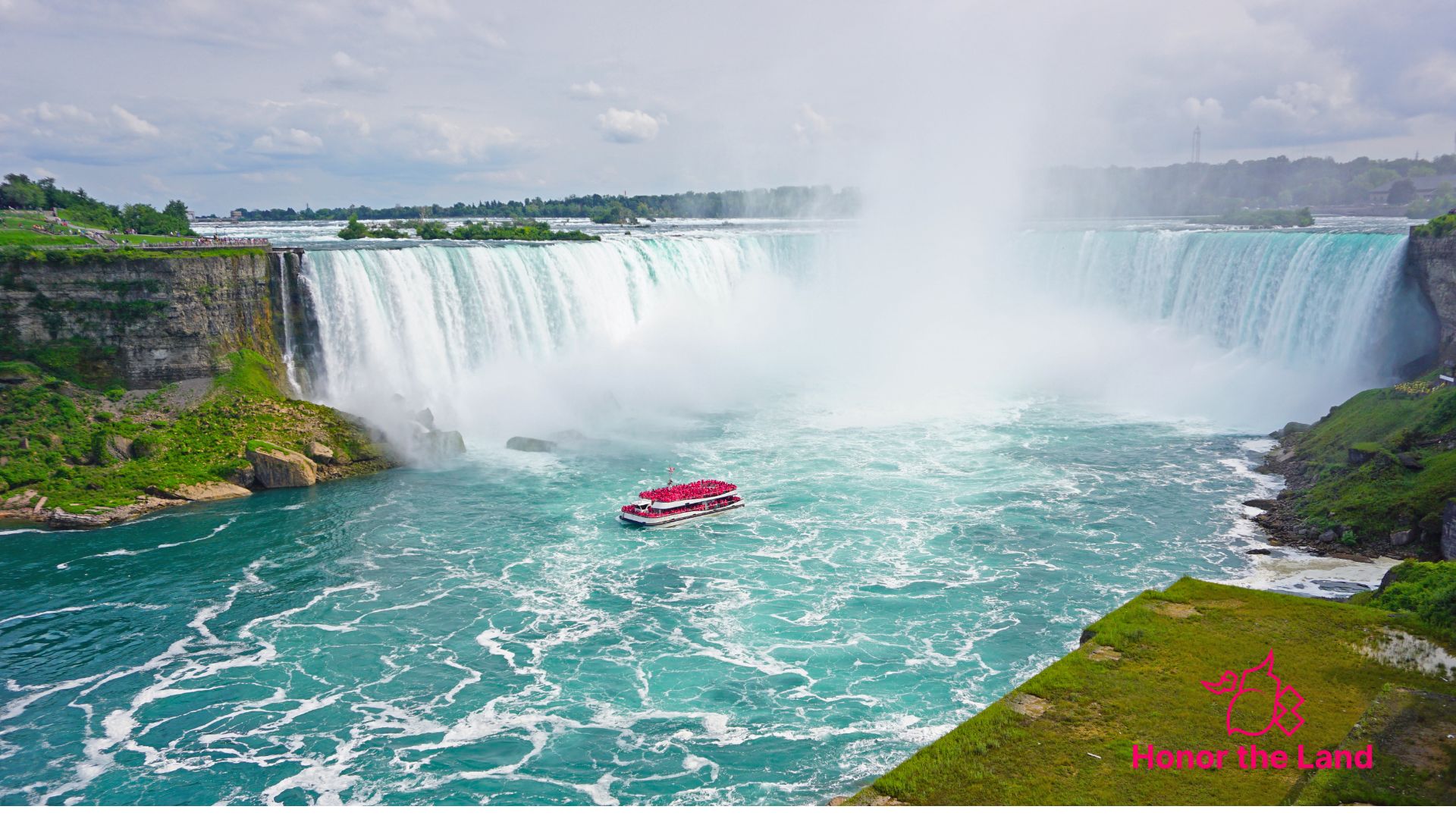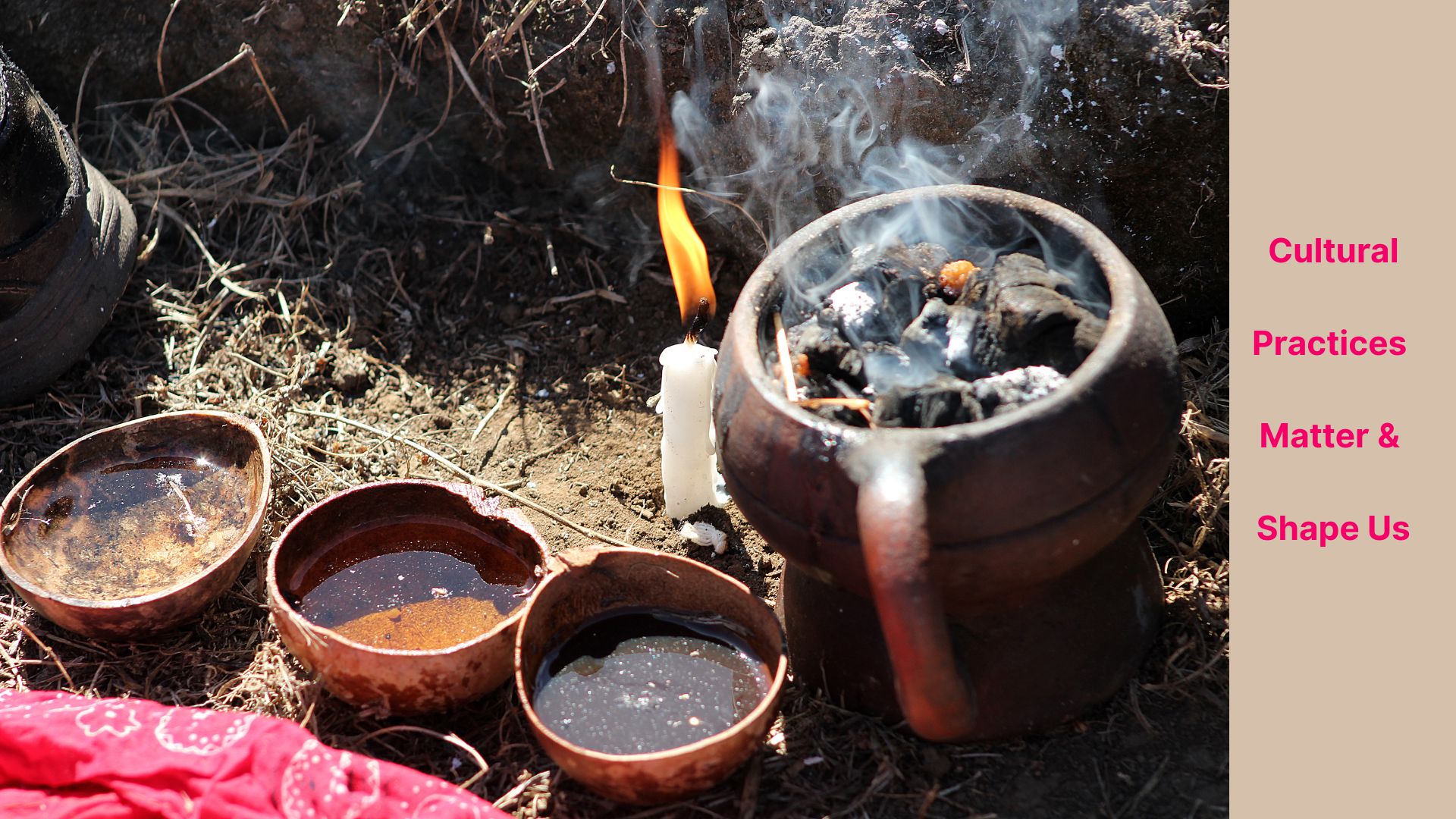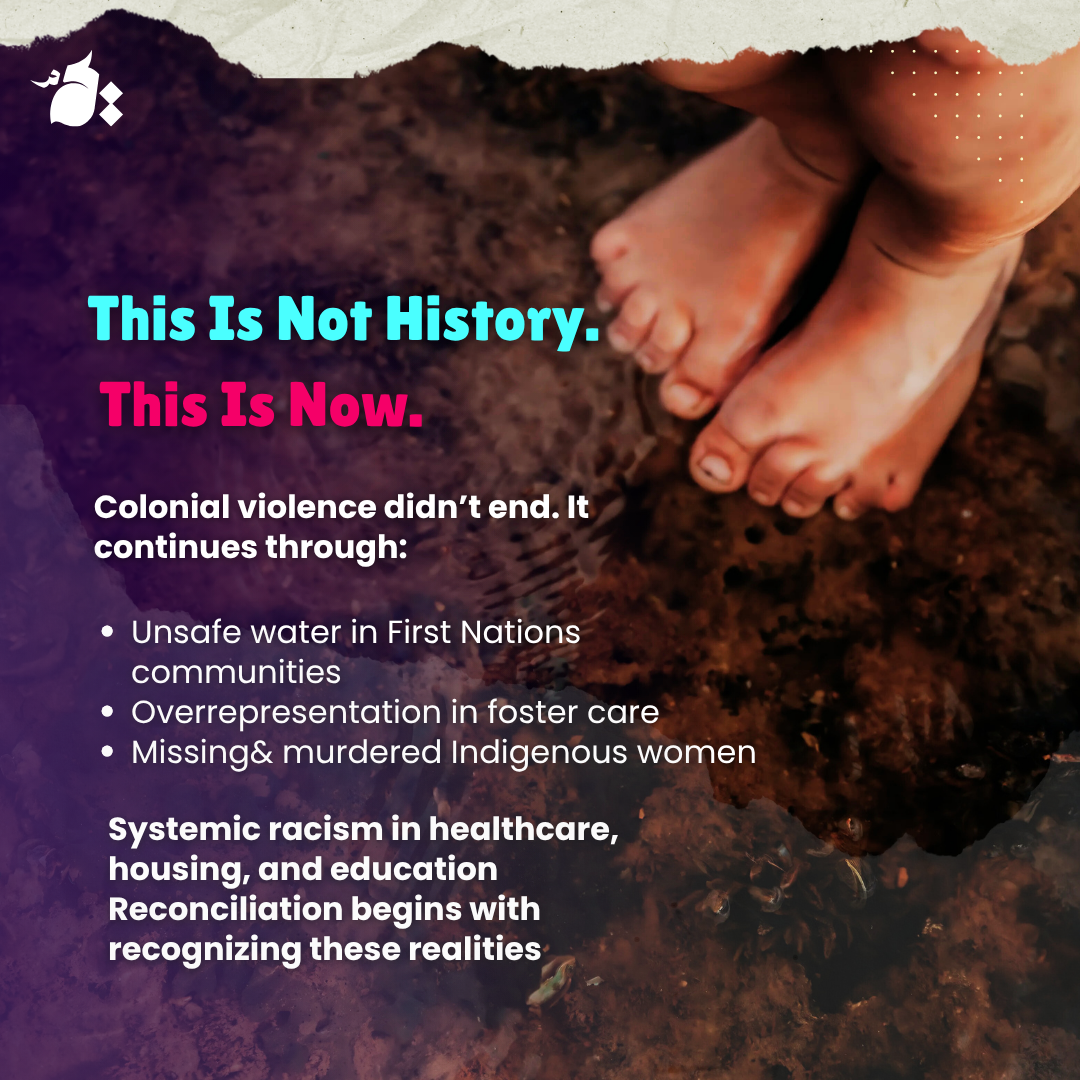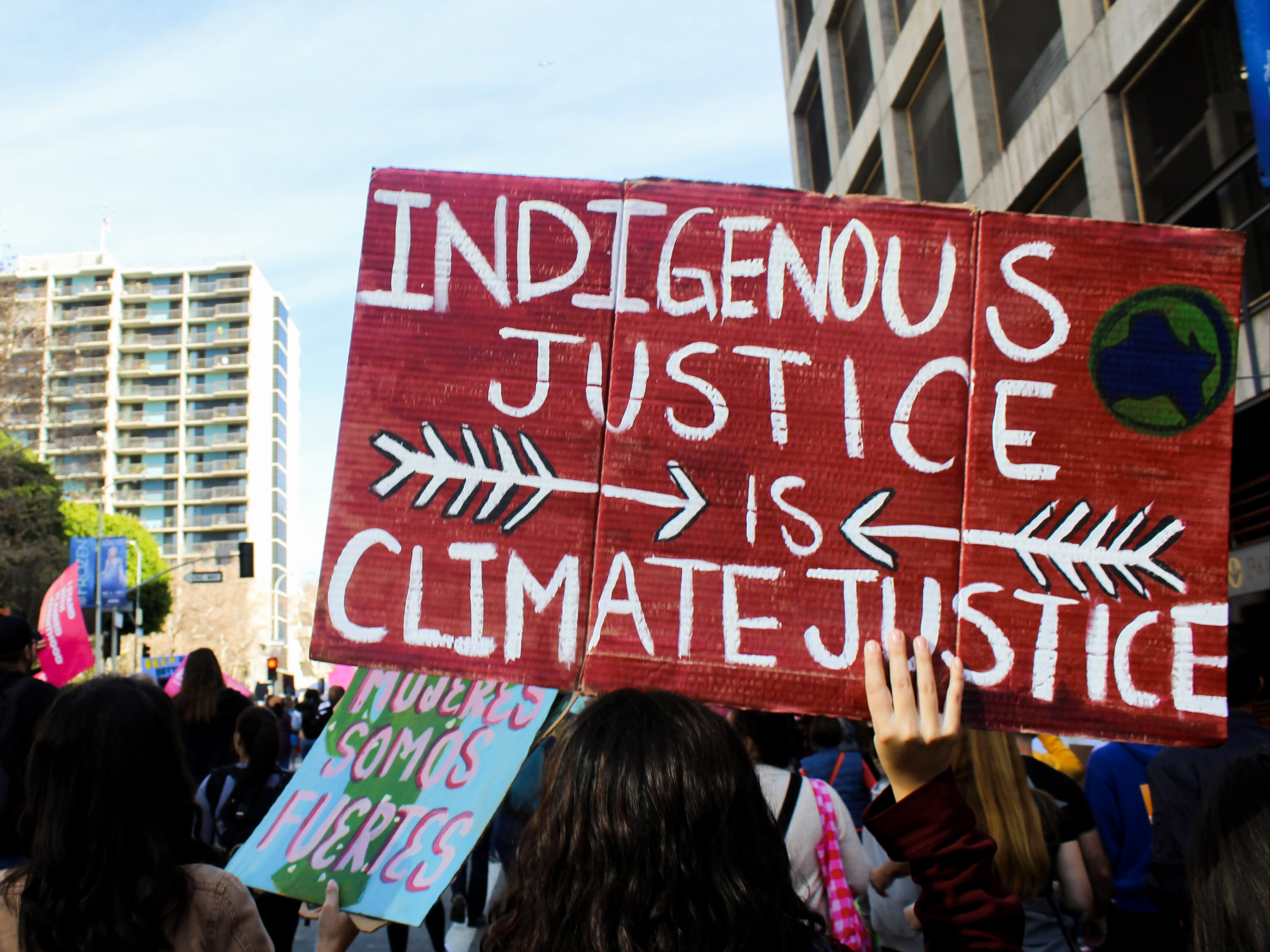A reflection and call to action for newcomers with lived experiences of colonialism and displacement
When you arrive in Canada, the first stories you often hear are about opportunity, peace, and diversity. We felt this warm welcome, and witnessed it as newcomers to our new home. What’s less often said—yet just as vital to understand—is that this land, known by many as Canada, is also Turtle Island: home to diverse Indigenous Nations who have stewarded it for millennia. The promises of this place have not been equally fulfilled.
Recently, I was at a concert (Soundstreams’s Event: TD Encounters: Ancestral Voices – featuring Mezzo-Soprano Marion Newman and pianist Angela Park). A poem was performed —its words pulled from the archives of government policy. There are the chilling words:
Dear sir,
Sow the seeds and separate, isolate, educate, assimilate – separate, isolate, educate, dominate.
Sow the seeds and forcibly, effectively kill the Indian in the child.
Yours respectfully,
These words stayed with me. Not just for their cruelty—but for their clarity. This wasn’t abstract. This was the blueprint of a system that sought to erase language, identity, and connection to land—a colonial project dressed in policy and carried out through institutions, schools, and silence. And what struck me even more was how familiar it felt. For many of us—especially those of us who come from colonized nations or carry Indigenous traditions of our own—this logic of erasure is not foreign. We’ve seen it. Lived it. Carried its echoes.
As we settle into our lives here—finding work, raising families, learning new systems—it becomes just as important to learn about the land we’re on, and about the people who continue to steward it. June is Indigenous Peoples Month, and it’s more than a celebration. It’s an invitation. A call to look inward and outward at once.
For newcomers, there is a unique opportunity to show up differently. To notice. To listen. To reflect. And to ask:
What does it mean to live on this land—respectfully, truthfully, and in solidarity?
We are reading and learning more about decolonization across Turtle Island, and actions to take to be in solidarity. Please share resources, links and advice for us, by email: janine@yammservices.com
Here we are sharing, step by step, our story with knowing more how to live on this beautiful land:
🌍 The Land
To start, we had to understand where we stood.
Every school, sidewalk, and skyline sits on Indigenous land. Yet this truth is often obscured by maps, property lines, and colonial narratives. When you learn whose territory you’re in—using resources like native-land.ca —something shifts. It becomes more personal. These aren’t anonymous names; they are Nations with living languages, governance systems, and cultural practices.

Land acknowledgements are part of this, but they’re not the end. Read the ones in your city. Let them prompt questions. What does it mean to live on unceded land? What responsibilities come with being a guest here? And as we ask, we must also listen. If you’re speaking with Indigenous Peoples, notice how they refer to themselves: First Nation, Inuit, Métis, or by their Nation’s name. Let your words reflect care.
For many newcomers, these stories resonate deeply. We may come from places where our ancestors faced land theft, language bans, or forced assimilation. Maybe our grandparents survived occupation, or our parents (in my case, it’s myself) fled war. These shared histories can create deep empathy—but they don’t make our stories the same. Being in solidarity means not comparing pain, but holding space for complexity and connection. It means recognizing both common ground and distinct sovereignty.

One influential voice on this exact point is Audre Lorde, the Black feminist poet-theorist. In essays like “There Is No Hierarchy of Oppressions” (collected in Sister Outsider, 1984), Lorde critiques what she calls the “oppression Olympics”—the tendency to rank who’s suffered more in order to earn political legitimacy. Instead, she insists that true solidarity must:
- Reject comparison of pain: Lorde writes, “There is no hierarchy of oppression; there is no oppression Olympics. We all stand on the bottom rung.” In other words, pitting one group’s suffering (“My pain is worse than yours”) only serves to fracture potential alliances.
- Hold space for complexity: She argues that our various identities—race, gender, class, sexuality—are “intrinsic to our understanding of self and community,” not barriers to solidarity. By acknowledging those differences rather than glossing over them, we can build more honest connections.
- Recognize both common ground and distinct sovereignty: Lorde emphasizes that embracing difference doesn’t mean erasing it. In “The Master’s Tools Will Never Dismantle the Master’s House,” she shows how the struggle against one form of oppression (say, sexism) cannot succeed if it reproduces another (like racism). To her, solidarity means working together from each group’s unique history and needs—“owning our differences and using them as bridges, not weapons.”
Put simply, Lorde’s intervention was: if we spend our energy saying “Who’s more oppressed?” we lose sight of how our struggles overlap and intersect. Instead, she called on us to stand together “in our differences”—holding space for each person’s lived reality (their “distinct sovereignty”) while also forging connection around shared values and aims. That insistence on both unity and difference is where she most directly addresses “not comparing pain” and “holding space for complexity and connection.”
🚨 Realities: Colonization Never Ended
Reconciliation requires us to see things clearly. Indigenous Peoples in Canada continue to face deep, systemic harm today. We have been on a learning journey, grieving while learning about the daily struggles that those native to the land still face:
- Indigenous Peoples in Canada face higher rates of discrimination: 44% of First Nations people reported experiencing discrimination in the past 5 years.
- Dozens of First Nations communities in Canada do not have access to safe drinking water.
- Indigenous children overrepresented in foster care, often separated from their families and culture.
- Indigenous women, girls, and Two-Spirit people continue to go missing or murdered, often without proper investigations.
- Generational trauma from residential schools, displacement, and cultural bans.
- Systemic racism in healthcare, housing, policing, and education.
These aren’t isolated tragedies—they’re connected threads in a long fabric of colonial violence. They persist in healthcare systems, in education, in housing and policing. This is not history. It is now. Learn from Indigenous sources like the Assembly of First Nations and powerful community platforms like the Taken Podcast.

🌾 Learning Indigenous Values in Social Change
And yet, Indigenous communities are not only surviving—they are leading. Across the country, Indigenous organizers, artists, and leaders are building new systems rooted in their ancestral knowledge. They are building new models for care, governance, and giving.
In the nonprofit sector, Indigenous protocols in fundraising teach us to pause before asking, to build long-term relationships before making requests, to return resources—not just redistribute them. It’s a model of care and consent that challenges extractive practices and invites deeper connection. These teachings are shaping a new school of philanthropy and nonprofit work. We follow and learn from these values—and we encourage you to do the same.
Impact-driven organizations, like the Reconciliation and Responsible Investment Institute, are challenging financial systems to align with Indigenous values—reminding us that reconciliation must extend to how money moves, how contracts are offered, and how investments are made.
This is what real systems change looks like. And we all have a role to play in it. We invite you to explore Indigenous-led organizations doing vital work.

💸 Action: Small or Big, It Matters
So how do we show up?
Not just during Indigenous Peoples Month—but always? We start small. We asked a friend, from an indigenous community, about how to take action at work, as a boutique agency serving nonprofits. These were the pieces of advice:
- We ask questions: Are Indigenous voices centered in my organization’s strategy, hiring, or programming? Are Indigenous businesses part of our supply chain? Are Indigenous voices included in decision-making?
- We reflect about how we fundraise, how we give, how we collaborate. We’re working to shift from performative allyship to participatory repair.
- We attend gatherings and take actions, when invited.
- We share lessons, learnings; and uphold abundance.
- We reciprocate and practice energy exchanges. One small example is to donate One Day’s Pay
Solidarity is not a single action. It is a way of living. It is remembering that being here means being part of a story that long predates us—and will continue long after. June offers us a moment to reflect. But the work doesn’t end there.
Let’s walk forward with awareness. Let’s speak with care. Let’s act with courage. Let’s keep showing up.
If you’re a newcomer, know this: the land gave you shelter. Indigenous Peoples have given much more.
It’s time to give back.
Let’s walk forward with awareness.
Let’s speak with care.
Let’s act with courage.
Let’s keep showing up.
PS: This paper was curated by Janine Ayoub. Please share with her your ideas by email on janine@yammservices.com.
We promise that this paper will try to grow at least once every month we will be updating it with more info, and more resources, and more lessons learned from our experience
As we live on this sacred land, we honor its original peoples and give gratitude to the skies, waters, and fires that sustain our bodies and spirits, while acknowledging the ongoing legacy of oppression and colonization.
Author Bio
Janine is a nonprofit leader and a certified fundraiser who enjoys helping meaningful nonprofits to grow. She builds on her wide experience to build a context-specific and adapted strategy for every organization she works with. She loves to solve puzzles, take long walks and learn new things.
